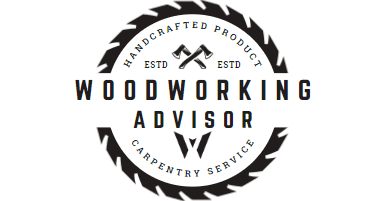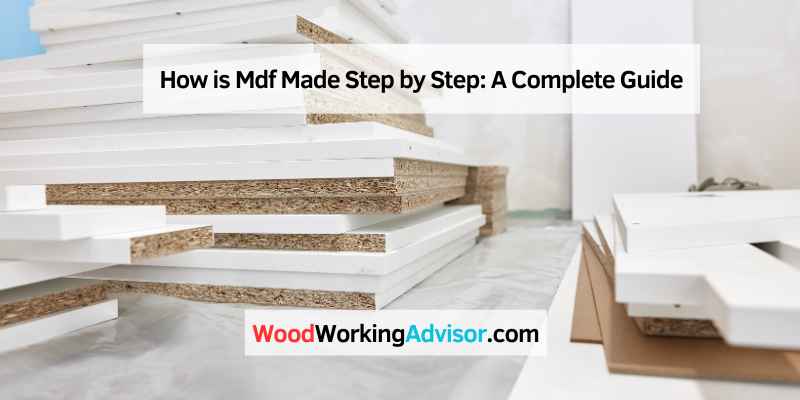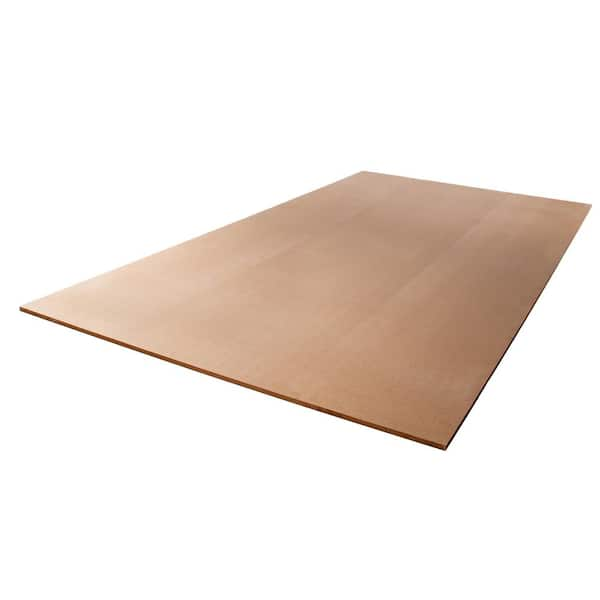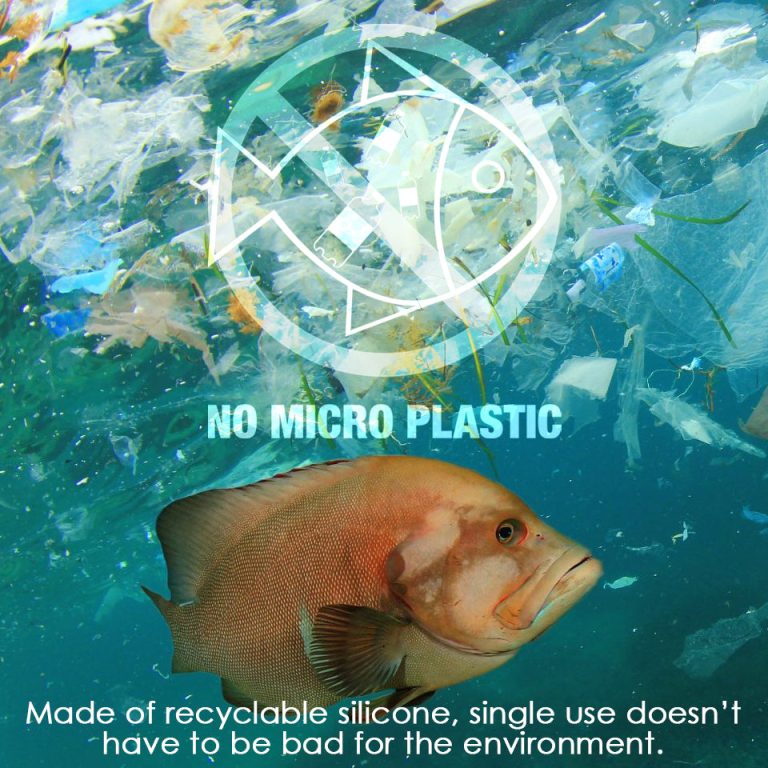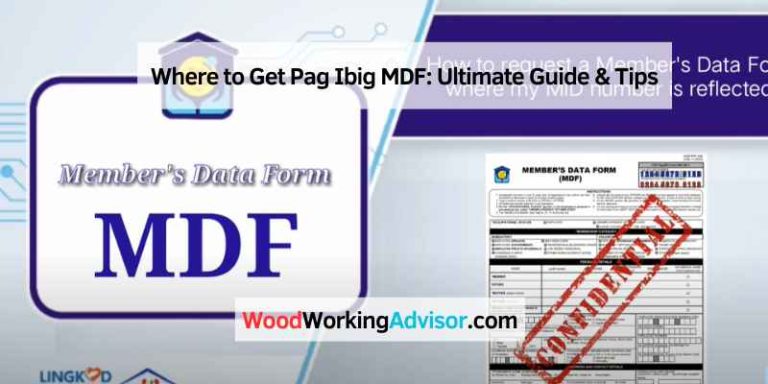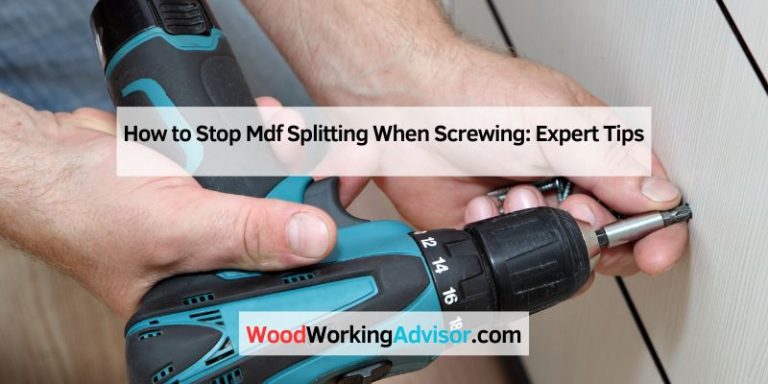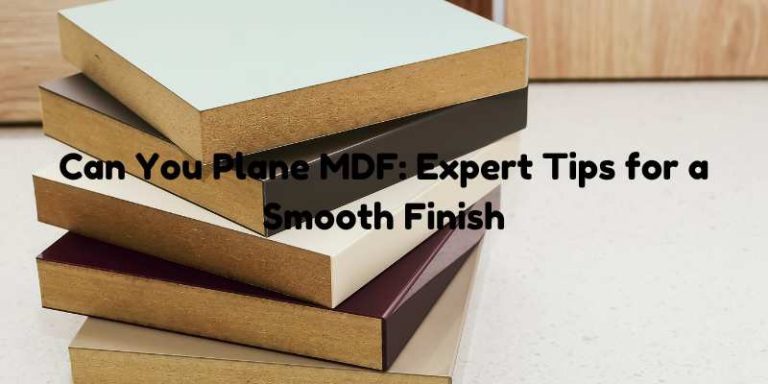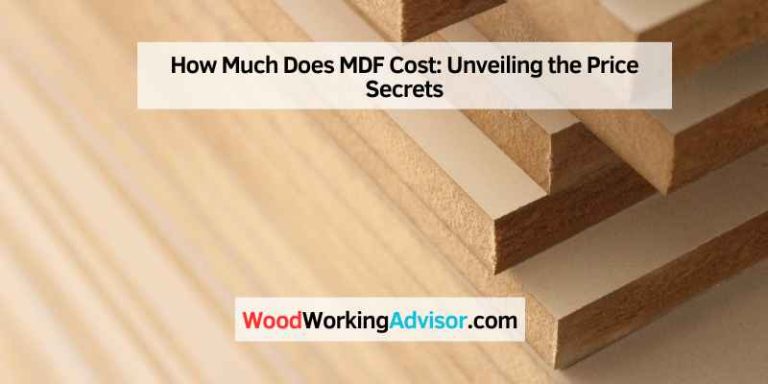How is MDF Made Step by Step: A Complete Guide
MDF is made by breaking down hardwood or softwood residuals into wood fibers, mixing them with wax and resin, and forming panels by applying high temperature and pressure. Medium Density Fiberboard (MDF) is a popular engineered wood product used in various applications.
It offers a smooth surface, making it ideal for painting and veneering. MDF is often preferred over solid wood due to its uniformity and lack of grain. It is used in furniture, cabinetry, flooring, and other construction projects. The manufacturing process ensures a consistent density and strength, making MDF a versatile choice for many projects.
This article delves into the step-by-step process of how MDF is made, highlighting its benefits and applications in modern construction and design.
Raw Materials For MDF Production
Medium Density Fiberboard (MDF) is an engineered wood product. It is made from wood fibers, resins, and additives. Understanding the raw materials is essential to grasp the MDF production process.
Sourcing The Wood
The primary raw material for MDF is wood. Wood sources include softwood and hardwood. These are often by-products from sawmills and other wood-processing industries.
The wood is chipped into small pieces. These wood chips are then washed to remove any impurities. The clean wood chips are ready for the next step.
Understanding Resins And Additives
Resins and additives are crucial for binding the wood fibers together. Urea-formaldehyde is the most common resin used. It provides strong adhesion and durability.
Other additives include wax and fire retardants. Wax helps in water resistance. Fire retardants improve the safety of the final product.
These components are mixed in precise proportions. This ensures the MDF has the desired properties.
| Component | Purpose |
|---|---|
| Wood Fibers | Main structure of MDF |
| Resins | Binding agent |
| Wax | Water resistance |
| Fire Retardants | Safety enhancement |
All these raw materials are essential for producing high-quality MDF. The next steps involve processing and combining these materials to create the final product.

Preparation Of Wood Fibers
The preparation of wood fibers is the first crucial step in making MDF (Medium Density Fiberboard). This process ensures that the wood fibers are ready for bonding and pressing. The preparation involves two main stages: chipping the wood and refining into fibers. Let’s break down each step in detail.
Chipping The Wood
The first step is chipping the wood. Large logs or pieces of wood are fed into a machine called a wood chipper. This machine cuts the wood into small, uniform chips. Uniform chips are essential for consistent quality in MDF boards.
Here’s a quick look at the chipping process:
- Feeding the wood: Logs or wood pieces are loaded into the wood chipper.
- Chipping: Sharp blades in the chipper cut the wood into small chips.
- Collecting the chips: The wood chips are then collected and transported to the next stage.
Refining Into Fibers
Next, the wood chips are refined into fibers. This step transforms the chips into fine wood fibers, which are necessary for making MDF. The refining process involves several steps:
- Steam cooking: The wood chips are cooked with steam to soften them.
- Mechanical refining: The softened chips are then passed through a refiner. The refiner grinds the chips into fine fibers.
- Screening: The fibers are screened to remove any oversized particles.
Here’s a table summarizing the refining process:
| Step | Description |
|---|---|
| Steam Cooking | Wood chips are softened with steam. |
| Mechanical Refining | Chips are ground into fine fibers. |
| Screening | Oversized particles are removed from the fibers. |
The refined fibers are now ready for the next stages of MDF production. The preparation of wood fibers sets the foundation for creating high-quality MDF boards.
Drying The Fibers
The drying process is crucial in MDF production. Removing moisture ensures the final product’s strength and quality. Let’s explore the techniques and methods involved in this essential step.
Techniques For Removing Moisture
Several techniques are used to dry the fibers efficiently. These methods ensure the fibers are free from excess moisture:
- Heat Drying: This method uses high temperatures to evaporate water from the fibers. Industrial dryers play a key role here.
- Air Drying: Fibers are exposed to moving air, which helps remove moisture. This method is slower but effective.
- Vacuum Drying: This technique uses a vacuum to lower the boiling point of water. It helps in quicker moisture removal.
Ensuring Consistent Dryness
Consistency is key in drying fibers. Uneven moisture can lead to defects in MDF boards. Here are some methods to ensure consistent dryness:
- Regular Monitoring: Continuous monitoring of moisture levels ensures even drying. Sensors and gauges are used for this purpose.
- Uniform Heat Distribution: Ensuring the heat is evenly distributed prevents uneven drying. This step is critical in heat drying methods.
- Controlled Airflow: In air drying, controlled airflow ensures all fibers receive equal exposure. This method helps achieve consistent dryness.
These techniques and methods play a vital role in drying fibers. They ensure the final MDF product meets quality standards.
Blending With Resin And Additives
Making MDF involves several steps. One crucial step is blending the wood fibers with resin and additives. This step ensures that the final product has the right strength and durability. It also helps in bonding the fibers together firmly.
Mixing Process
The mixing process is vital. It ensures all wood fibers get coated with resin. First, the wood fibers are placed in a large mixing chamber. Then, resin is sprayed onto the fibers. Additives are also mixed in. These additives can include wax, hardeners, and other chemicals.
Mixing blades rotate at high speed. This movement ensures that the resin and additives spread evenly. The goal is to coat every fiber. This helps in creating a strong bond between fibers.
Determining The Correct Proportions
Determining the correct proportions of resin and additives is essential. Too much resin can make the MDF heavy and brittle. Too little resin can make it weak and flimsy. To get the right mix, precise measurements are necessary.
A typical mixing ratio might look like this:
| Material | Proportion (%) |
|---|---|
| Wood Fibers | 82% |
| Resin | 10% |
| Additives | 8% |
The exact proportions can vary. Factors like the type of wood and the desired MDF quality affect these ratios. Technicians use precise tools to measure each component.
- Wood fibers provide the base structure.
- Resin acts as a bonding agent.
- Additives enhance specific properties like water resistance.
Once the proportions are determined, they are mixed thoroughly. This ensures a uniform distribution throughout the batch. The resulting mixture is ready for the next stage in the MDF production process.
Forming The MDF Mat
The process of forming the MDF mat is crucial in MDF production. This step involves shaping and pressing the wood fibers into a dense, uniform mat. The mat will later be transformed into medium-density fiberboard (MDF).
Creating The MDF Shape
First, the wood fibers are mixed with resin and wax. This mixture ensures the fibers stick together.
The mixture is then spread evenly onto a conveyor belt. This forms a loose mat of wood fibers.
Uniformity is key at this stage. Machines help to level and compress the mat. This ensures the mat has an even thickness.
The Role Of Pressing In MDF Formation
Next, the mat enters a pressing machine. Here, the mat is subjected to high pressure and heat.
The pressing process removes air pockets from the mat. It also helps to bond the fibers tightly together.
Heat activates the resin and wax in the mixture. This creates a solid and stable MDF board.
Once pressed, the mat is cooled and further processed. This ensures the MDF has a smooth and consistent finish.
Pressing And Heating
The Pressing and Heating stage is crucial in the production of MDF. This process ensures the boards are strong and durable. Let’s explore how pressing and heating work step by step.
The Compression Stage
In the compression stage, the MDF fibers are placed in a huge press. The press squeezes the fibers together with immense force. The goal is to remove any air pockets and ensure the fibers stick together. The pressure makes the MDF boards dense and strong.
Applying Heat And Pressure
After compression, the next step is applying heat and pressure. This step is essential for bonding the fibers together. The press heats up to very high temperatures. The combination of heat and pressure activates the resin in the fibers.
The heat makes the resin melt and flow. The pressure helps the resin spread evenly. This process creates a solid and uniform board. The board is then cooled down to lock the fibers in place.
| Step | Description |
|---|---|
| Compression | Fibers are squeezed to remove air pockets. |
| Heating | High temperatures melt the resin in the fibers. |
| Pressure | Pressure helps spread resin and bond fibers. |
| Cooling | The board is cooled to set the fibers in place. |
Each step in the pressing and heating process plays a significant role in making MDF. The result is a strong and durable board ready for use.
Cooling And Trimming
The cooling and trimming stage is crucial in the manufacturing of MDF. This phase ensures the final product meets the desired specifications. Proper cooling and trimming guarantee the board’s stability and uniformity.
Reducing The Temperature
After pressing, the MDF board is very hot. It’s essential to reduce the temperature to prevent damage. The cooling process begins immediately after pressing.
The boards pass through a series of cooling chambers. These chambers use air or water to bring down the temperature. This step ensures the MDF does not warp or crack.
Here’s a brief overview of the cooling process:
- Boards exit the press at high temperatures.
- They move through cooling chambers.
- Air or water reduces the temperature evenly.
- Boards reach a stable temperature, ready for trimming.
Achieving The Final Dimensions
After cooling, the MDF boards need trimming to achieve the final dimensions. The edges are rough and uneven post-cooling.
The boards pass through trimming saws. These saws cut the boards to the required sizes. This step ensures the edges are smooth and straight.
Here’s a step-by-step outline of the trimming process:
- Boards enter the trimming saws.
- Saws cut the rough edges.
- Boards are sized to the final dimensions.
- Edges are inspected for smoothness.
Trimming is vital for the final product’s quality. Proper trimming ensures the MDF boards fit perfectly for their intended use.
Sanding And Finishing
The sanding and finishing process is crucial in creating high-quality Medium Density Fiberboard (MDF). This step ensures the board’s surface is smooth and ready for further use. Let’s delve into the details of this important phase.
Achieving Smooth Surfaces
The first step in sanding is to use coarse sandpaper. This removes any rough edges and surface imperfections. Machines with large rollers and sandpaper belts are used for this.
Next, finer sandpaper is used to achieve a smooth surface. This step ensures the MDF is free from scratches and dents. The boards are then inspected to ensure they meet quality standards.
| Step | Description |
|---|---|
| Initial Sanding | Uses coarse sandpaper to remove rough edges. |
| Fine Sanding | Uses finer sandpaper to smooth the surface. |
| Inspection | Checks for scratches and dents. |
Final Touches Before Distribution
Once the MDF boards are smooth, they undergo finishing processes. This involves applying coatings or sealants to protect the board. The coatings also enhance the board’s appearance.
The boards are then cut to size according to customer requirements. Packaging is the final step. The boards are carefully wrapped to prevent damage during transport.
- Coating – Protects and enhances appearance.
- Cutting – Boards are cut to required sizes.
- Packaging – Ensures safe transport.
These final touches ensure the MDF boards are ready for distribution. The boards are now ready for various applications in construction and furniture making.
Quality Control
Quality control is a critical part of the MDF manufacturing process. It ensures the final product meets high standards. The process involves several key steps to maintain consistency and quality.
Testing For Defects
Testing for defects is one of the first steps in quality control. Workers inspect the MDF boards for any visible flaws. These flaws could be cracks, warping, or uneven surfaces.
Advanced machines help detect defects not visible to the naked eye. These machines use ultrasound or X-ray technology. They ensure the boards are free from internal flaws.
| Defect Type | Detection Method |
|---|---|
| Cracks | Visual Inspection |
| Warping | Measurement Tools |
| Internal Flaws | Ultrasound/X-ray |
Ensuring Compliance With Standards
Ensuring compliance with standards is another vital step. The MDF must meet industry standards for strength and durability. These standards are set by organizations like the American National Standards Institute (ANSI).
Quality control teams run several tests to check compliance. These tests include:
- Density Test
- Moisture Content Test
- Thickness Swelling Test
- Internal Bond Strength Test
Each test has specific requirements. For example, the density test ensures the board has the right weight for its size. The moisture content test checks if the board has the correct water content.
All test results are recorded and analyzed. If a board fails any test, it is rejected or reprocessed. This ensures only the best quality boards reach the market.
Environmental Considerations
The manufacturing of MDF (Medium Density Fiberboard) involves several steps that impact the environment. Understanding these impacts is crucial to make sustainable choices. Below are some key environmental considerations in MDF production.
Recycling Waste Material
Recycling waste material is vital in MDF manufacturing. Factories often use wood scraps and sawdust.
This method reduces the need for fresh timber. Using waste material helps in conserving forests and lowering deforestation rates.
| Source | Material |
|---|---|
| Sawmills | Wood Chips |
| Carpentry Shops | Sawdust |
| Recycling Centers | Old Wood Products |
Recycling not only saves resources but also reduces landfill waste. This approach makes MDF a greener option.
Reducing Emissions During Production
Reducing emissions during production is another crucial aspect. Factories use advanced technology to limit air pollution.
- Modern machines have filters to trap dust and particles.
- Energy-efficient equipment cuts down on fuel use.
- Some factories use renewable energy sources.
Emission control helps in maintaining cleaner air and reduces the carbon footprint. Factories also follow strict guidelines to minimize harmful gases.
These steps ensure that MDF production is as eco-friendly as possible.
The Future Of MDF Manufacturing
The future of MDF (Medium-Density Fiberboard) manufacturing is bright. New technologies and sustainable practices are shaping the industry. These advancements promise better quality and eco-friendly production.
Innovations In Production
Recent innovations in production are revolutionizing the MDF industry. Automation and AI are now integral parts of the manufacturing process. They ensure precision and efficiency in every step.
3D printing is another game-changer. It allows for the creation of complex shapes and designs that were impossible before. This technology reduces waste and speeds up production.
A significant innovation is the use of advanced adhesives. These adhesives are stronger and more durable. They improve the overall quality of the MDF boards.
Sustainable Practices In The Industry
The MDF industry is adopting sustainable practices to reduce its environmental footprint. One such practice is the use of recycled wood fibers. This reduces the need for fresh timber and helps conserve forests.
Another important practice is the implementation of energy-efficient processes. Factories are now using less energy, thanks to new technologies. This not only saves costs but also reduces greenhouse gas emissions.
Water recycling systems are also becoming common. These systems treat and reuse water, minimizing water wastage. This is crucial for areas facing water scarcity.
| Innovation | Benefit |
|---|---|
| Automation and AI | Precision and efficiency |
| 3D Printing | Complex designs and reduced waste |
| Advanced Adhesives | Stronger and durable boards |
These innovations and sustainable practices are not just trends. They are the future of MDF manufacturing. They ensure the industry remains competitive and eco-friendly.
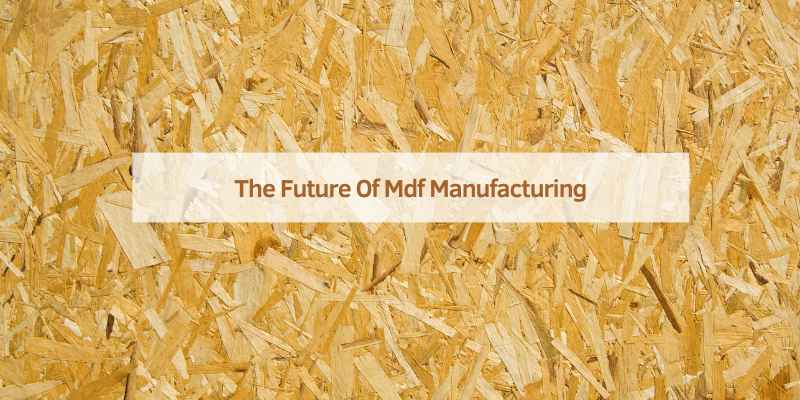
Frequently Asked Questions
How Is MDF Produced?
MDF is produced by breaking down wood fibers, combining them with resin, and pressing them under high temperature and pressure.
What Are The Steps In MDF Manufacturing?
MDF manufacturing involves these steps: debarking, chipping wood, refining fibers, adding resin, forming mats, hot pressing, cooling, sanding, and cutting.
What Are The Raw Materials Of MDF?
MDF is made from wood fibers, resin, and wax. Wood fibers come from hardwood or softwood. Resin and wax bind the fibers.
Is MDF Made From Sawdust?
Yes, MDF is made from sawdust. It combines sawdust and resin, then compresses them under high pressure and heat.
Conclusion
Understanding how MDF is made step by step helps you appreciate its versatility. This process transforms wood fibers into a durable product. Knowing each stage ensures better material choices for projects. MDF’s creation emphasizes precision, making it ideal for various applications.
Stay informed and make smarter decisions with MDF.
